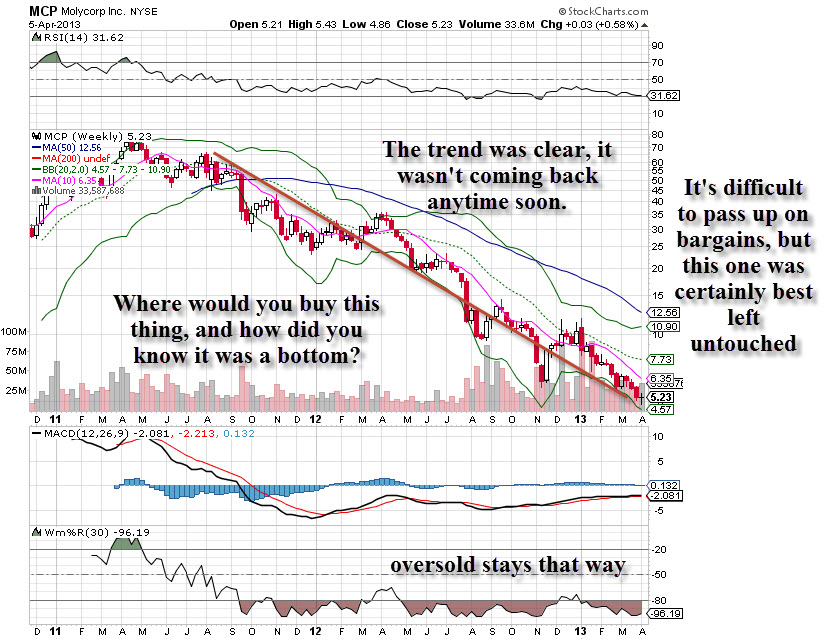Many of us believe that when stocks fall that is our cue to start buying. If you’re aware, observant and fortunate it’s not unlikely to pick up something that has sold down indiscriminately. But there are stocks that fall and hardly ever recover – for a good reason. How do you identify a legitimate drop (where you are looking to scoop shares) from one that should be avoided like poison ivy? Well, I’m a technician by trade and while the charts always tell the story first, the fundamentals also tend to be in sync. As an options trader my focus is to buy strength or sell weakness, but it’s a different mentality with stocks. Buy low, sell high right? Not always the case.
Now, my good friends Tim Melvin and Jon Heller – the value guys – would argue this is the best way to go. No surprise, they are usually right at the end of the day.
But how do we know if a stock should be bought when it tanks or we should just avoid it? Of course, that’s a tricky question. You can always make a case for buying an IBM, Google, Merck or Exxon after a drop. These companies ebb and flow but over time you get the best opportunities when they dip and you’ll make out in the long run. But we’ve all seen the ones that fall and never come back, or if they do it’s with a stroke up luck or after a tremendous amount of time. The opportunity cost of buying and holding a name that could take years to move is huge – could that capital have been placed elsewhere?
I look at a stock like Molycorp, a dominating company in the rare earth metals business. It had a meteoric rise up to 75 into 2011 on speculative buying and crashed down hard, sitting today around 5 bucks. As it declined it seemed to be offering ‘levels’ to enter, but they were trap doors. Should this stock have been bought as it was falling? It was a slow and painful drop, like Chinese water torture. The technicals tell the story (see the chart below).
Now, I do not want to entirely diss an approach to pick up some value. There are times where this strategy pays off. Remember Bank of America at 3 bucks? Morgan Stanley at 10? How about Amazon at 40 in 2008, or Apple at 80 at the same time? The timing on those buys were once in a lifetime. My good friend Tim Collins, a Real Money Pro Contributor recently cashed out of a portfolio he called the ‘trash truck’. He stated five criteria for the portfolio (too much to mention, but you can learn how he constructed it by finding Tim HERE daily, where he is active on ‘The Trading Floor‘). The original names he picked on Dec 7 are below:
- Sony (SNE)
- Dell (DELL)
- Petrobras (PBR)
- Canon (CAJ)
- Constant Contact (CTCT)
- Carbo Cermamics (CRR)
- Universal Display (PANL)
- Marvell Tech (MRVL)
- Green Dot (GDOT)
- ServiceSource (SREV)
- Deckers Outdoor (DECK)
- Ubiquiti Networks (UBNT)
- Weatherford (WFT)
How did he do? Just last week Tim posted this on Real Money: The equally weighted portfolio, excluding dividends, is up a bit more than 17% vs. the SPDR S&P 500 (SPY), which has gained about 9.5% in the same time frame. This was a much higher risk portfolio, so I expected to see outperformance if the market was strong.
Not too shabby of performance, but look at the names in the portfolio. Stocks that you have seen/heard before, dropped for a specific reason and then roared back. Sony? Petrobras? Deckers? To be fair, he added more names to the list that enhanced the returns a bit later than Dec 7. If you look at the charts most on this list offered a great opportunity. Some names drop and won’t come back. Hindsight 20/20? Sure, you can say that but if you use some common sense and logic it’s not difficult to find the ones that may work well.





















